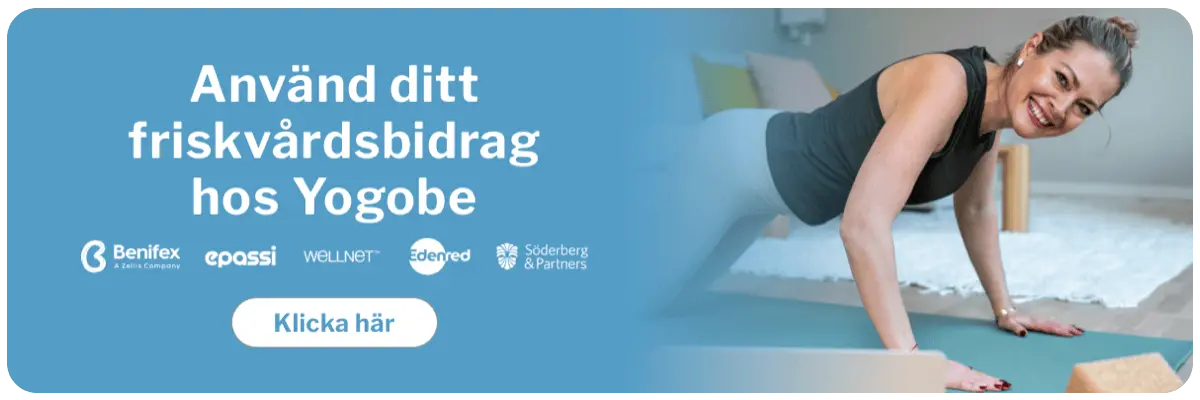
Increased performance with mobility practice
Personal Trainer Matthew Griffiths explains why, and how everybody can benefit from an effective mobility practice. Learn more about mobility training, how it helps keeping a healthy and well functioning body as well as maximizing results and performance, here.
What is mobility?
The term mobility means the combination of full range of motion within each joint structure coupled with healthy soft tissue (muscles, tendons and fascia) that produces mobility. Erwan Le Corre the creator of MovNat clearly states that, “Mobility places you in optimal position”, which exactly works in accordance with the notion that form equals function. Mobility is the ability to get into a better position and move in such a way that you will be creating a stronger movement environment for your body and performance, whether you’re a runner, a tennis player or a person that just want a pain free functional body.
There is no doubt that Form is Function, meaning the alignment of your body (form) will dictate how you perform (function). Mobility is an essential component to this formula because it dictates whether or not you can have correct form. It’s important to note that mobility is comprised of three factors, which are collectively represented by the degree of which one can accurately maintain proper alignment through a specific movement pattern.
The Three components of Mobility:
- Flexibility of the Soft Tissue
- Range of Motion at the Joints
- Neurological Coordination of Movement Patterns
Mobility is not your flexibility, mobility is the combination of flexibility of the soft tissue, the range of motion of every joint and the neuromuscular coordination involved in creating the specific movement. Problems can occur when someone misinterprets mobility as flexibility, as it implies the answer for addressing a lack of mobility is purely stretching, which is not the case as that solution neglects the associative neurological patterning and joint limitations within one’s movement.
In other words, stretching alone will not improve the way that you ‘create’ movement in a holistic sense because the flexibility of one’s soft tissue is only part of mobility. The other components that are essential to mobility are the range of motion at each joint and the neuromuscular coordination of every movement pattern, that ability to maintain strength at the end ranges of movement. To elaborate, a person may be ultra-flexible in certain positions, but still lack mobility when it comes to a specific movement pattern (another movement) because they may have limitations in the joint or not have the strength when the soft tissue is at full range.
When one of the three components of mobility is compromised this can lead to an increased risk of injury and joint pain. If you remember that mobility is a combination of these three components and include them in your practice or training you will optimize your position and move more effortlessly.
Mindset
Although it is widely accepted that a powerful mindset can truly alter the outcome of a chosen task it is still under trained by the majority. What happens in your mind during that important moment really sets the stage for whether you perform to the best or the worst of your ability. I use these three mindsets, they have been particularly useful personally as well as in my work as a pro trainer. There are many variations that has been inspired from other mental training methods, but I find these to be logical and user friendly for many.
Booster
I think of the booster mindset as a way to be more proactive, assertive, and forceful, for example, when going for a risky shot in golf or tennis, or setting a fast pace in a marathon. This mindset is often needed for athletes to shift from a solid performance to exceptional performance because it allows them to take their performances to the next level, particularly for those who aren’t naturally proactive or assertive in how they perform. The Booster mindset can be developed in several ways.
First, you’re more likely to perform dynamic if your body is amped up a bit more than usual. You can raise your physical intensity with more movement during practice, in your pre-competitive routines, and just before you begin to compete. Simply moving more and being more dynamic in your movements will help you shift to a more powerful mindset.
Second, you can use high-energy self-talk to instill that Booster mindset. Examples include: “I can do it, I will succeed".
Third, you can incorporate a booster mindset into mental imagery in which you see and feel yourself competing energetically which in turn helps in creating a more attacking thinking, focus, and feeling.
Calm
A calm mindset is typically good for those who can get nervous before game or a sense of doubt when performing a new drill. Your primary goal is to re-set your mindset and to settle down and relax, thus allowing your mind to let go of doubt and worry and your body to be free of nerves and tension. Additionally, a calm mindset can be valuable for many who are naturally very energetic.
A calm mindset can be created in several ways. First, it’s difficult to have a calm mind if your body is anxious, so focusing on relaxing your body is a good start. Deep breathing and muscle relaxation are two good tools you can use to calm your body.
Second, you can use mental imagery in which you see and feel yourself being calm before a competition. This imagery response has a direct physiologically relaxing effect on both your body and mind.
Third, calming and reassuring self-talk can ease your tension, for example, “Easy does it. Cool, calm, and collected." Relaxing self-talk can take the edge off of your nerves giving you the comfort and confidence to perform your best.
Clear
A clear mind involves having basically nothing related to performing going on in your mind before a big moment or game. This mindset is useful for those of us that might be cheerfully talking before a competition or speech, often smiling when talking to friends and coahces, dancing around, chatting it up, or singing to ourselves. These individuals can use a clear mindset because they have trained their bodies to an extent that they can trust it completely to perform their best without any interference from their minds.
A clear mind is most suited for individuals who are intuitive (meaning they don’t have to think about their sport very much to perform their best), free spirited (meaning they go with the flow rather than being really structured in their approach to their sport) and experienced (meaning they have a lot of confidence and trust in their capabilities from many years and successes).
Find the mindset that works best for you
You create a calm mindset by thinking about anything except your sport. Talking to others around you, thinking about someone or something that makes you feel good and listening to music in your head are some ways you can keep your mind clear, and thus preventing it from getting in the way of your body performing its best.
Training the mindset like any training or new practice requires several steps to instill and master. First, you have to experiment to figure out which mindset will work best for you. Second, you need to make a commitment to adopting an ideal mindset. Third, you must focus on your desired mindset in practice and competitions to create that mindset. And, finally, you need repetition in practice and competitions to ingrain your ideal mindset so deeply that, when you begin the most important competition of your life, that mindset just clicks on and it enables you to perform your very best.
Further reading
- Make a long term investment in your body, by Matthew Griffiths.
- Exercise for long-term wellbeing - here’s how you get started, by Tanja Djelevic.
- Training with resistance band, by Julia Glutz
Mobility training online
video id: sv8k
video id: n3bd
video id: g42f
video id: sr57
About Matthew Griffiths
Matthew is an education provider and personal trainer within the fields of health and fitness. Matthew's work is focused on having every student develop their natural movement patterns.
To watch a full video you need to be logged in as a paying Yogobe member. Haven't tried Yogobe before? Try it for free during 14 days – get started here!

Yogobe
